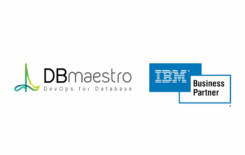In February, Gartner posted an article describing DevOps not as a market, but as a “Tool-centric philosophy that supports a Continuous Delivery value chain.” The fact that many people are still looking to properly explain what DevOps is, demonstrates how unclear DevOps remains to the general public. DevOps does not have a consistent definition within the industry as it changes with different impacts, so we wanted to take the time to dispel some myths.
DevOps Myths
1. DevOps is Continuous Delivery.
DevOps does not just deal with automation, but works to affect cultural change, create a better collaboration between development and operations, build well-defined processes, and be Agile.
2. Continuous Delivery is automation.
While automation is an important part of Continuous Delivery, there is also a lot more to it. Continuous Delivery also works to build repeatable processes, create feedback loops, define the scope of changes, and determine what should actually be promoted or defined as “done”.
3. DevOps implementation requires DevOps teams.
This is actually the exact opposite of what DevOps advocates! DevOps works to break silos, not create a need for new teams and new silos! It is important to make sure that the business team talks to the development team, and that the development team talks to the operations team, etc. Everyone should talk! You can’t achieve that by creating a new team that needs to talk to the Dev team, Ops team and everyone else.
4. DevOps is Agile in production.
This one is not too far from the truth, but not exactly true either. Yes, the purpose of DevOps is to help the organization become more agile, but that is not just like agile development methods and implementation in production. DevOps is about the cultural change, about creating better communication between Dev & Ops, and about the development team thinking about the operations team and vice versa. A better definition would probably be, “Extending agile and lean thinking from development to organization.”
5. Everyone needs to incorporate DevOps.
While DevOps does bring a heap of benefits, if nothing is flawed with what you have, why change anything? If you are quick to respond to market needs, are outmaneuvering your competition, and are well-managing your risks without DevOps, then you obviously don’t need it. But if you are trying to make your system quicker, safer, and better, DevOps may make a lot of sense.
DevOps Facts
Some survey figures to focus on (sources: PuppetLabs, CA, DBmaestro):
- 66% of the organizations that were surveyed have implemented DevOps and continuous delivery for their applications.
- Only 16% of those organizations saw DevOps as a cost-reducing driver. 49% of the participants credited DevOps for their better performance, faster time to market, and better ROI.
- 48% of the respondents felt that the major obstacle to not using DevOps was the lack of knowledge, while 33% felt that they didn’t have the right tools nor the time to implement it. Some expressed their mistrust in automation as a reason not to adopt CD.
- 84% of those surveyed put version control systems at the top of the list of tools that supports a DevOps initiative. Modern version control systems are the basic building blocks of every process related to automation and continuous integration or delivery.
Making sure your database can participate in the efficient DevOps and Continuous Delivery implementation is obviously critical. However, the database requires dealing with different challenges than application code. Implementing database version control and database continuous delivery proves to be a challenge for many organizations.





